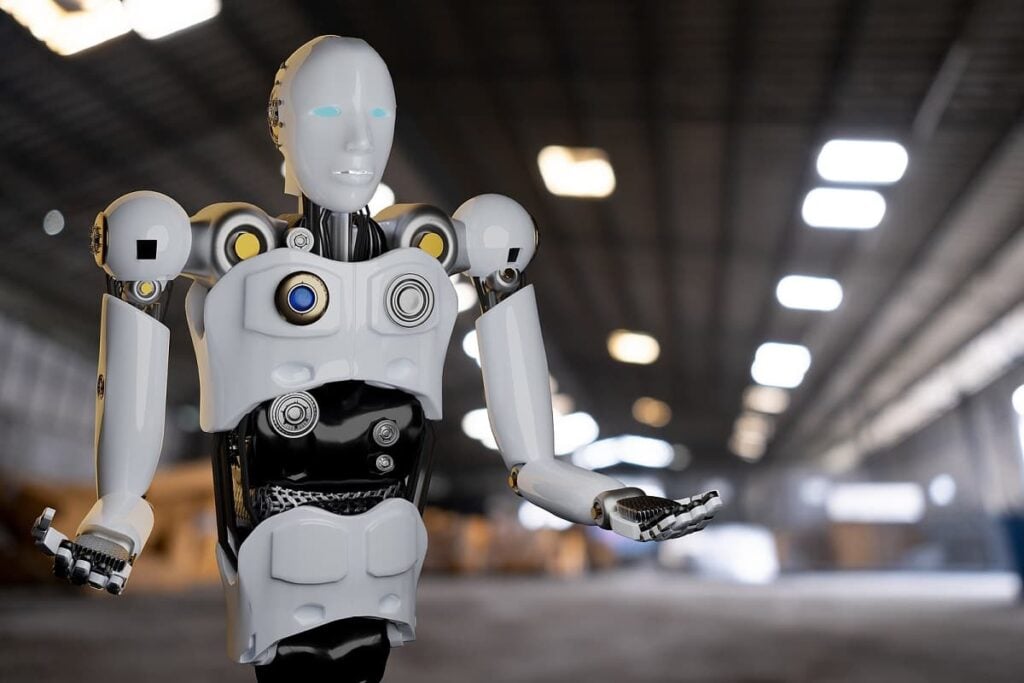Why The Future of Robotics May be Four-Legged
Table of contents

Every so often, social media throws us a bone. To welcome in the New Year, Boston Dynamics decided to make their robots dance. And dance they did. Even His Holiness Elon Musk took a break from his 17-hour workday to share this amazing piece of video with social media.

One commentator on Twitter rightly wondered how much time and money was spent on this marketing stunt. Since Boston Dynamics – the company behind these dance moves – is now owned by Hyundai Group, they’re subject to the whims of the chaebol that now controls them. If someone in the family thought it would be fun to see the cute-looking robots do a dance, that’s what became the new priority for this immensely talented dev team.
If we placed those robots on the cute spectrum, the dog would win hands down. It also happens to be the first of these robots to be offered for sale, already beginning to see commercial deployments in dangerous environments such as oil rigs.
Man’s Best Friend
When most people think of robots, they think of anthropomorphic, two-legged androids. In reality, the robots of the future are unlikely to look like us. Instead, say experts, they will be highly specialized for particular purposes (such as the robotic surgery systems currently being deployed across the world) or resemble man’s best friend. In other words, they will have four legs, or none.
This prediction was granted further evidence recently, with two announcements. The first was that ANYbotics, the creators of ANYmal, a four-legged autonomous robot platform intended for a variety of industrial uses, has raised $22.3 million ($20 million CHF) in Series A funding to continue developing and scaling the business. The second was that Hyundai has taken control of Boston Dynamics, the market leader in four-legged robots, for a massive $1.1 billion.
The market for quadrupedal robots is a relatively young one. Research in this area is typically still confined to universities, which have met with limited success in attempts to market their four-legged robots. Though startups such as Ghost Robotics are generating interest from the military and other sectors, there are several companies appearing to take the lead with adaptable quadruped robots with a range of uses that are actively being deployed in the field.
Why Four Legs Are Better Than Two
First, let’s get the obvious question out of the way: why four legs, rather than two? Well, in reality, the question should probably be put the other way around. Quadrupedal robots are easier to build, easier to program, and far more stable and robust than their two-legged counterparts, and so have become the standard test-bed for emerging mobile robotics systems.
The preference for four-legged robots has also been driven by the current range of applications in which they are being used. The primary value of walking robots, at least right now, is that they are able to enter environments that humans would find difficult or impossible to survive in. This means that these robots must negotiate difficult terrain and be stable on their feet.
Quadrupedal robots perform well in both areas. They lift only one foot at a time and so are able to always remain stable on the other three. They also have a much lower center of gravity than anthropomorphic robots, thus programming them to “walk” is easier. This is why this design is preferred for the three main applications in which they are being used currently – warehousing and retail automation, sewer inspection, and firefighting.
A Big Total Addressable Market
Despite the range of promising applications for four-legged robots, the market for these machines remains relatively underdeveloped. Or, to put it more precisely, the options for investment in this technology remain limited.
This is not due to a lack of interest, but because the vast majority of active research in this area is being conducted under the auspices of universities. Almost all of the prototype quadrupedal robots released so far have been designed and built by academic research labs such as DFKI Robotics Innovation Center in Germany, or the HyQ robot from Italy.
Research in this area is also being conducted outside the West, with Chinese universities leading the charge. The Institute of Automation and Unitree Robotics, both organizations based in China, have produced their own promising versions of these robots. However, both companies are only active within China and as such are effectively barred from investment capital from outside the country.
In the USA, MIT’s Mini Cheetah is also a university-developed-and-built robot. However, it is also perhaps the most mature of these projects, like Boston Dynamics and ANYbotics before them. Expect the team behind it to form a private company in the next few years to market their products.
Finally, an honorable mention goes to Sony’s Aibo – a robotic pet dog – for being perhaps the first (and definitely the cutest) four-legged robot to gain mainstream recognition. For robots with no legs, the award goes to Qoobo.

In short, this means that, at least for now, the market for four-legged robots is dominated by two companies – Boston Dynamics, and now ANYbotics. Let’s take a more detailed look at both.
ANYbotics – A Bark as Big as Its Byte
ANYbotics, like many of the similar projects mentioned above, started life as an academic research group. In this case, the group was based out of ETH Zurich, a world center for robotics research. Founded in 2016, this Swiss startup has taken in nearly $23 million (20 million CHF) in funding to develop a series of four-legged robots. The current model that the company produces – the ANYmal C – is the third generation of robots produced by the team and by far the most advanced. With three high-end Intel i7 computers, this waterproof robot is fully autonomous and capable of running for 2-4 hours on a single charge.
The focus of ANYbotics is to ensure reliability and resilience for industrial applications. The company has focused on operational reliability and robustness in harsh environmental conditions, rather than on agility. This has allowed them to successfully distinguish themselves from Boston Dynamics, whose robots are generally more fragile. As such, ANYbotics appears well-positioned to secure lucrative contracts with manufacturers, power plants, and providers of data centers, with the added advantage that the Swiss company’s products are automatically approved for use within the EU. Having Swiss telecommunications company Swisscom as an investor should open some doors as well.
Boston Dynamics – The OG of Quadrupeds
Founded way back in 1992, Boston Dynamics started out as an MIT spinoff before it was acquired by Google in 2013. The company was then run by serial tech pioneer Andy Rubin who came to Google via Android, a company that he co-founded and which was named after him. In 2017, Boston Dynamics was sold to Softbank which then sold it again to Hyundai Group just last month. Ever since its “Spot” robot went viral back in 2018, Boston Dynamics has been intimately associated with the sector and has led the way both in terms of the capabilities of four-legged robots and in raising investment capital to research them. Their two-legged robots aren’t half bad either.

Up until this year, many analysts worried that the company was something of a mirage. As of January 2020, while it had produced many appealing videos, Boston Dynamics’ robots were unavailable for purchase and had only been leased to a select few companies as part of an early adopter program.
In June, that changed. You can now order a Spot Explorer Kit from the Boston Dynamics online store for US $74,500. This general release represents something of a watershed moment in the four-legged robotics industry and, indeed, for the robotics sector as a whole. It is the first time that a general-purpose, AI-enhanced robot has been released for commercial purposes. This also means, of course, that right now Boston Dynamics is the only company from which four-legged robots can be purchased.
Conclusion
The majority of people who saw the dancing robots video questioned if it was real. Many thought it was a clever use of CGI. If you’ve been following the progress being made by Boston Dynamics, you’ll know that these robots are capable of a whole lot more than moonwalking. Investors believe in the potential in four-legged robots, making it likely ANYbotics and Boston Dynamics won’t be alone in their quest to make four-legged robots as ubiquitous as man’s best friend.
Sign up to our newsletter to get more of our great research delivered straight to your inbox!
Nanalyze Weekly includes useful insights written by our team of underpaid MBAs, research on new disruptive technology stocks flying under the radar, and summaries of our recent research. Always 100% free.

















DATE = 9-JANUARY-2021
THIS THE INVASION OF THE ROBOTS!, WONDERFULLY GOOD IF THE ROBOTS IS FOR MAN’S USE AND HELP BUT WHAT IF IT’S BEEN CONTROLLED AND HACKED AND TURNED INTO A KILLING MACHINE THEN IT WILL BE CHAOS AND A WRECKING HAVOC AND BECOMES NEMESIS OF MANKIND!, THIS JUST MY FEARLESS PREDICTION.
That’s a pretty strongly worded prediction Felix. We’d be more concerned about AGI to be honest.
https://nanalyze.com/2020/12/investing-artificial-general-intelligence-agi/